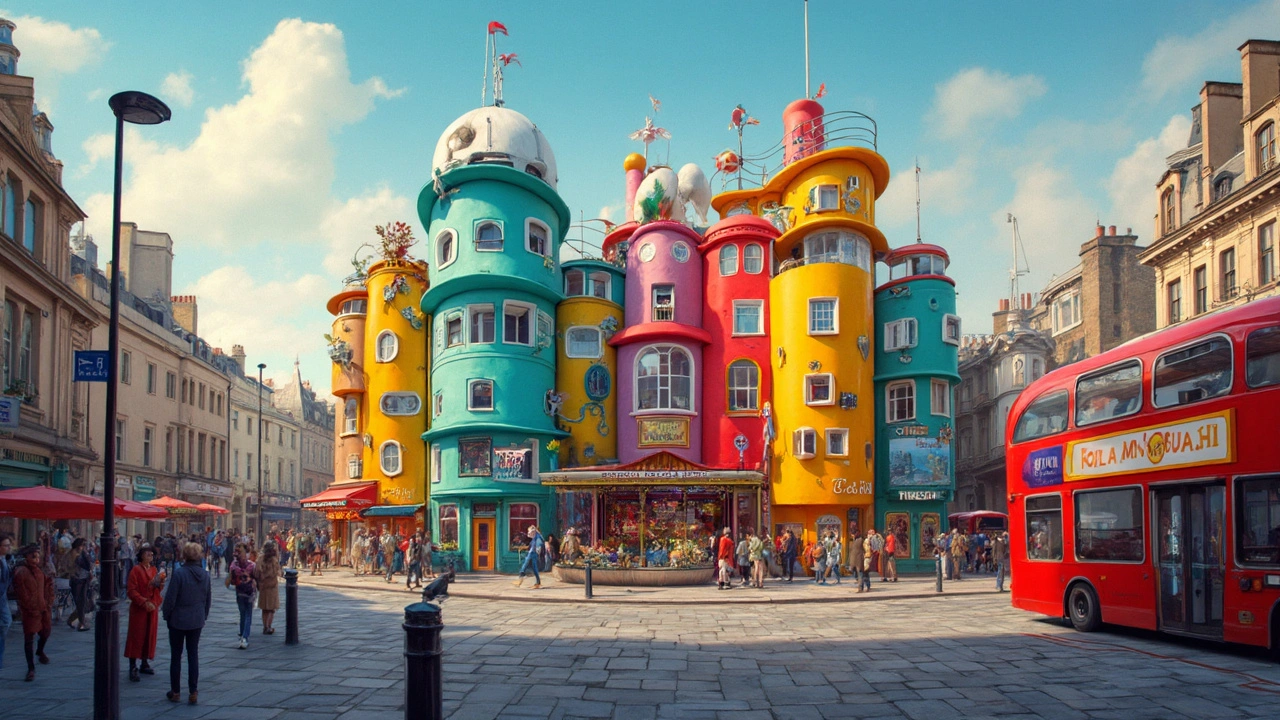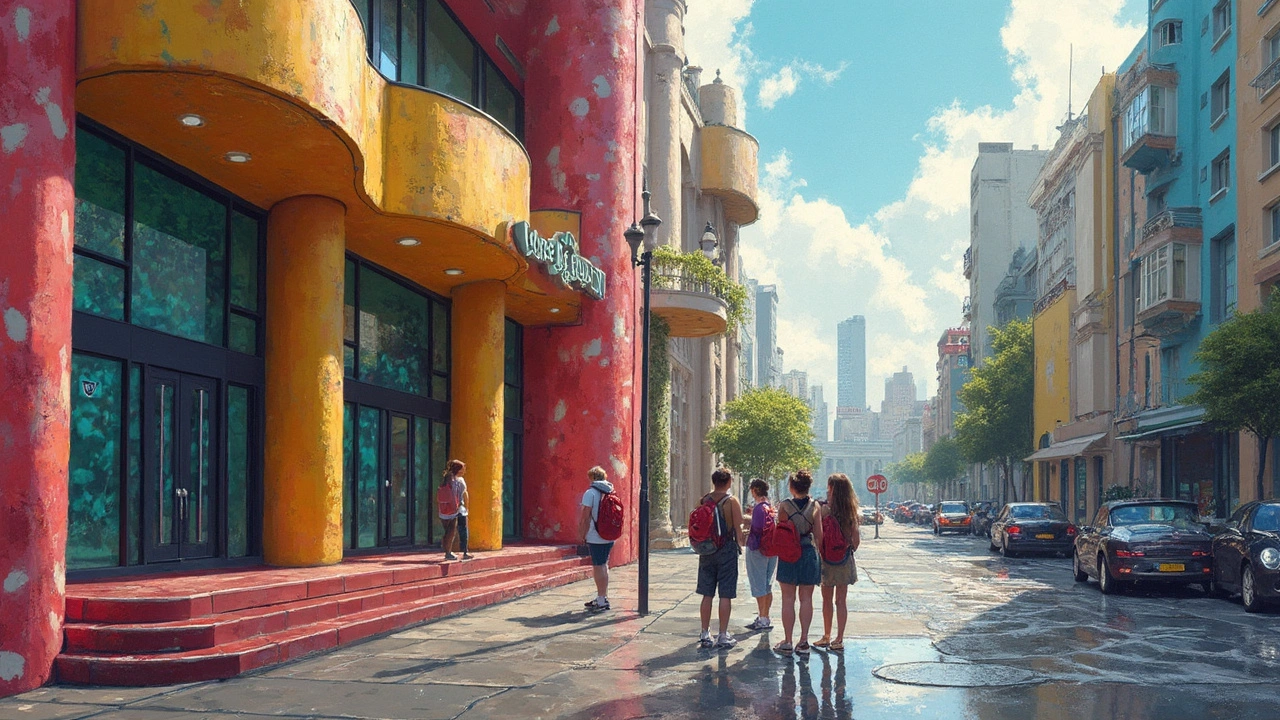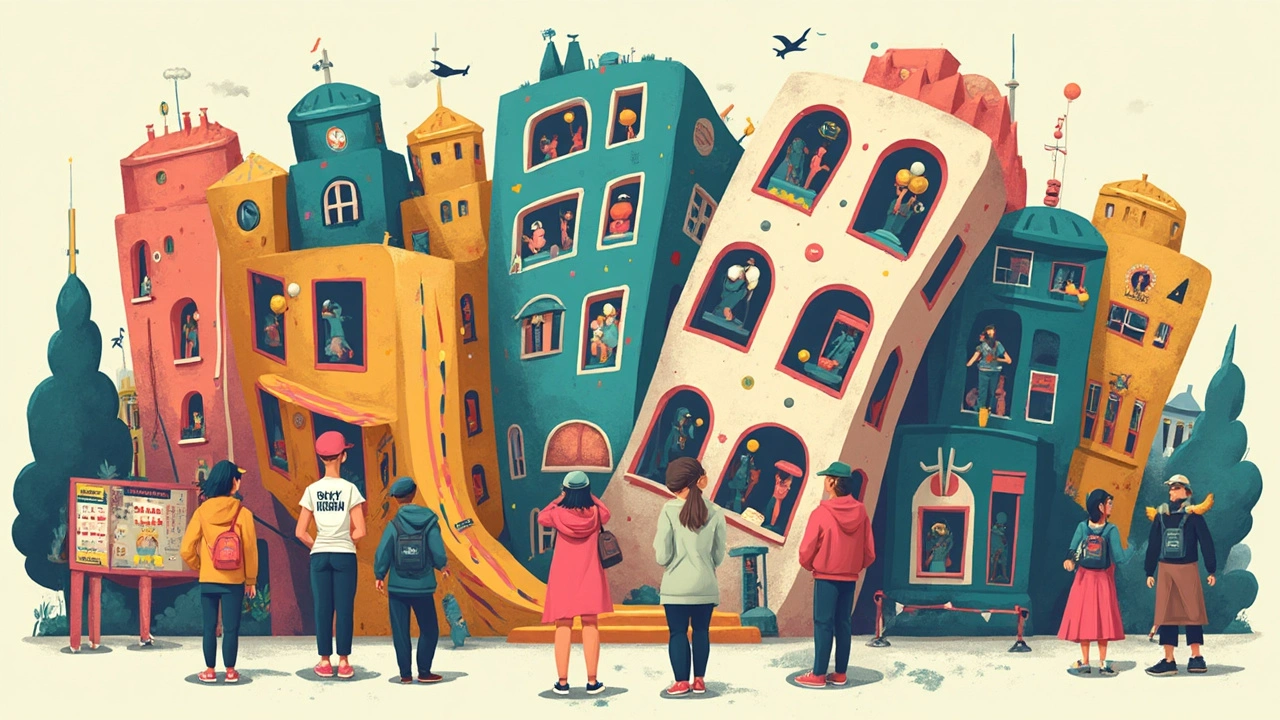Postmodern Architecture: Rethinking Design from the Ground Up
 May, 3 2025
May, 3 2025
Walk through any big city and you’ll probably stumble across a building that just doesn’t fit the mold. Maybe it has a weird shape. Maybe it’s decked out in colors you’d expect on a kid’s birthday present. That’s postmodern architecture doing its thing, turning heads and breaking rules—sometimes both at once.
If you’ve ever thought, “Why does that building look like it’s from another planet?” you’re on to something. Postmodernism tossed out the straight, simple lines that modernism loved so much. Instead, architects started playing with unexpected shapes, borrowed details from the past, and mixed them all together in one building. It’s like remixing old songs but with concrete and glass.
People either love these buildings or can’t stand them. But here’s the thing: postmodern architecture made cities a lot less boring. It gave us reasons to stop, stare, and sometimes scratch our heads. And once you know what to look for, you can start spotting postmodern touches everywhere—from funky office towers to your local library.
- Kicking Out the Rules: Why Postmodernism Happened
- Key Features That Set Postmodern Buildings Apart
- Famous Postmodern Buildings and Their Stories
- How to Spot Postmodernism in Daily Life
- What Postmodern Design Means for Cities Today
Kicking Out the Rules: Why Postmodernism Happened
Back in the mid-1900s, cities were filling up with boxy, glass-and-steel buildings. Everything looked neat and tidy, but also kind of bland. This was all thanks to a design approach called modernism. Modernists thought that "less is more," so they stripped away anything they saw as unnecessary. Think plain white walls, no color, flat roofs, and not much personality.
But by the 1960s and 70s, a lot of people—and especially architects—got tired of buildings that all looked the same. Enter postmodern architecture, which basically said, "Why should buildings be boring?" Architects like Robert Venturi and Denise Scott Brown kicked things off. They poked fun at the old ways, using shapes and decorations that didn’t match or make total sense. This wasn’t just rebelling for fun. They wanted to make places feel more welcoming and connected to their surroundings.
Venturi’s 1966 book, “Complexity and Contradiction in Architecture,” was like a wake-up call. He argued that it was okay for buildings to be interesting, silly, and even contradict themselves. People started building with bright colors, odd angles, and details borrowed from old styles—even using columns, arches, and neon lights in the same project. Suddenly, it was okay for a design philosophy to be playful and unpredictable.
So why did all this happen? Here’s the nutshell version:
- Culture was changing fast—think pop art, new tech, bigger media. Buildings needed to reflect the wild energy of daily life.
- City life was getting busy, and people wanted places that felt unique, not copy-pasted from one city to another.
- Architects wanted to challenge the old "rules" and give buildings more personality—whether folks loved or hated the results.
| Modernism | Postmodernism |
|---|---|
| Simple, clean lines | Mixed styles, playful shapes |
| Neutral colors | Bold, varied colors |
| Serious vibes | Humor and irony |
By the end of the 1970s, postmodern architecture started popping up everywhere—from hotels to shopping malls. People finally had something to talk about besides how boring buildings looked. And spoiler: arguments over these designs are still going strong.
Key Features That Set Postmodern Buildings Apart
So what actually makes a postmodern architecture building stand out from the crowd? It’s not about subtle tweaks; postmodernism is all about going bold, funny, and sometimes even weird. Here are the main things you’ll spot when checking out these buildings:
- Mix and Match Style: Unlike old-school modernist boxes, postmodern designs love to steal details from everywhere—Roman columns next to glass walls, flashy neon with boring bricks, or even a fake classical pediment stuck on a new shopping mall.
- Playful Colors: Forget the endless gray and white. Postmodern buildings can be awash in purple, teal, pink, and even bright yellow. The Portland Building’s turquoise tiles and red panels are a dead giveaway.
- Layered Shapes: You’ll see triangles stuck on top of cubes, round windows hiding in corners, and dizzying rooflines. These buildings look like they’ve been assembled from giant building blocks. The Piazza d’Italia in New Orleans is famous for its layered shapes and fountains in wild arrangements.
- Historical References: Designers often pull past eras into the present—Greek columns, Baroque curves, or Art Deco patterns—but make them a bit ironic or tongue-in-cheek.
- Surprise Factor: Expect random pops of whimsy, like giant sculptures, playful signs, or decorative elements that just seem there for fun. Take Frank Gehry’s Dancing House in Prague—nobody sees that coming.
Want the numbers? By the mid-1980s, a survey reported that at least 40% of new commercial buildings in major U.S. cities were influenced by postmodern architecture. Styles exploded all over the world, so the mix-and-match look isn’t locked to one country or climate.
| Feature | Typical Example |
|---|---|
| Bold Colors | Portland Building (USA) |
| Historic Details | Piazza d’Italia (USA) |
| Unusual Shapes | Dancing House (Czech Republic) |
| Mix of Materials | AT&T Building (USA) |
When you spot a building that seems like it’s telling a joke, poking fun at the past, or just showing off, chances are good you’re looking at something postmodern. It’s design unleashed—and that’s exactly what set it apart in the late 20th century and still does today.

Famous Postmodern Buildings and Their Stories
If you want to see postmodern architecture at its loudest and most playful, you’ve got to check out a few famous buildings that started all the buzz. These places didn’t just show off a new look—they actually made people rethink what a building could be.
Take the Portland Building in Oregon. Designed by Michael Graves and finished in 1982, it’s basically postmodernism’s poster child. Instead of the usual gray box, Graves wrapped the building in bright teal tiles and pasted on fake Greek columns. At the time, some locals hated it, but now it’s a historic landmark with its own fan club—even with that weird red ribbon around it.
Next up, the Piazza d’Italia in New Orleans. Charles Moore designed this plaza in the late '70s. If you visit, you can’t miss the oversized, cartoon-like Italian columns, neon lights, and fountains everywhere. It shows how postmodern ideas can turn a public square into a spot people actually want to hang out in. Moore took stuff straight from Italian history but added a playful twist that just didn’t exist in earlier styles.
Across the pond, the SIS Building in London (better known as the MI6 headquarters) looks like something out of a spy movie—and it literally is, since it’s featured in tons of James Bond films. Built in the early '90s by architect Terry Farrell, it mixes steps, terraces, and weird window patterns. If you want proof that architecture trends can go global, this is it.
There’s the AT&T Building (now called 550 Madison Avenue) in New York. Designed by Philip Johnson, it made waves with its top that looks suspiciously like an old-fashioned “Chippendale” cabinet. Completed in 1984, that broken-pediment crown became a kind of meme in the world of iconic buildings.
Here’s a quick look at how some of these buildings stack up:
| Building | City | Year Completed | Main Architect |
|---|---|---|---|
| Portland Building | Portland, Oregon | 1982 | Michael Graves |
| Piazza d’Italia | New Orleans | 1978 | Charles Moore |
| SIS Building (MI6 HQ) | London | 1994 | Terry Farrell |
| AT&T Building | New York City | 1984 | Philip Johnson |
So, why do these postmodern buildings matter? Every one of them started debates about what makes design good or bad, useful or just plain wacky. Today, they’re not just landmarks—people travel miles just to snap a selfie and say, “Yep, I’ve seen that in person.” Postmodernism turned architecture into a conversation, not just a background feature.
How to Spot Postmodernism in Daily Life
Once you know the signs, picking out postmodern architecture is easier than you think. You don’t need to be an architect; you just need to keep your eyes open and look for the stuff that stands out. Here’s what to watch for when you’re out and about:
- Wacky shapes and angles: If the building doesn’t look like a regular box, there’s a good chance it’s postmodern. Look for tilted roofs, odd rectangles, or anything that looks like it just shouldn't work—yet somehow does.
- Mix-and-match styles: Does the building have columns like a Greek temple, glass walls, and maybe even some neon? When you see a mashup of styles from different times and places, that’s classic postmodernism. The Portland Building by Michael Graves is basically famous for this.
- Bold colors: Forget boring gray. Postmodern buildings go for blues, pinks, reds, and everything in between. This makes them easy to spot even from a distance. The Piazza d’Italia in New Orleans has splashes of bright colors mixed into its design—it’s kind of impossible to miss.
- Playful or odd details: If you spot a giant sculpture slapped onto an office block, or a window shaped like a keyhole, you’re probably looking at postmodern design. These details are intentionally quirky: there’s often a joke or a reference tucked in there.
Want a quick comparison? Here’s how modernism vs postmodernism lines up on key features:
| Feature | Modernism | Postmodernism |
|---|---|---|
| Shapes | Simple, straight lines | Weird, unexpected angles |
| Colors | Neutral (white, gray, black) | Bright, bold, playful shades |
| Ornament | None—clean and plain | Plenty—columns, sculptures, and weird objects |
| References | No history, just now | Mixes old and new, lots of in-jokes |
If you want to train your eye, snap photos of buildings that catch your attention and compare them. Museums, libraries, even shopping malls—some of the wildest postmodern architecture hides in everyday places. Next time you walk by a building and think, “What were they thinking?”—that’s your clue. Postmodernism loves to surprise.

What Postmodern Design Means for Cities Today
It’s kind of wild how postmodern architecture keeps cities interesting, even decades after it first showed up. Instead of blending in, postmodern buildings stand out. See a bank built in the 80s that looks more like a birthday cake than a vault? That’s postmodernism making you look twice. And it works—research from the American Institute of Architects says unique buildings increase local foot traffic by up to 15%.
Postmodernism didn’t just change how buildings look. It changed what they mean to people. Before, modern buildings often felt kind of cold and mostly the same everywhere. Now, cities use postmodern architecture to tell a story or poke fun at boring old traditions. For example, the Portland Building in the U.S. is known for its loud decorations, showing that government buildings don’t have to be plain and dull.
This shift made architects bolder. Suddenly, designers started asking, “Why not?” Want giant columns? Color blocks? A rooftop that looks like a pyramid? Go for it. That playful attitude sparked more creativity downtown and inspired a trend of mixing old styles with new tech. Even regular folks joined in, demanding buildings that feel special instead of copy-paste towers.
There are some real-life perks, too. Here’s what postmodern design brings to today’s cities:
- Iconic Landmarks: Think of London’s MI6 building or Barcelona’s W Barcelona Hotel. Tourists go out of their way to see them.
- Mixed Use: Many postmodern buildings squeeze shops, offices, and even homes into the same space—making neighborhoods busier and safer.
- Bolder Renovations: Instead of tearing old stuff down, designers add wild, new features to existing buildings. It’s cheaper, greener, and keeps the city’s character alive.
One cool fact: A 2023 study by the Urban Land Institute found that staged renovations of older postmodern sites increased commercial property values in those areas by an average of 9% within two years. Here’s a quick snapshot of the impact:
| City | Postmodern Landmark | Reported Tourism Rise |
|---|---|---|
| Portland, USA | The Portland Building | +13% |
| London, UK | MI6 Building | +8% |
| Sydney, AUS | Queen Victoria Building | +16% |
So, next time you see a building that looks out of place, remember: it’s probably there on purpose, making your city less boring and a bit more fun.